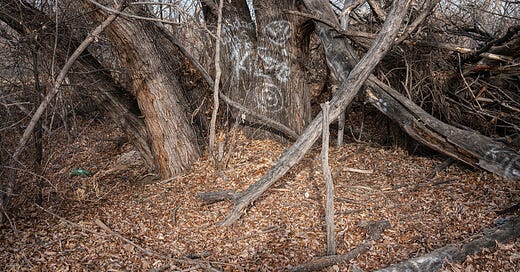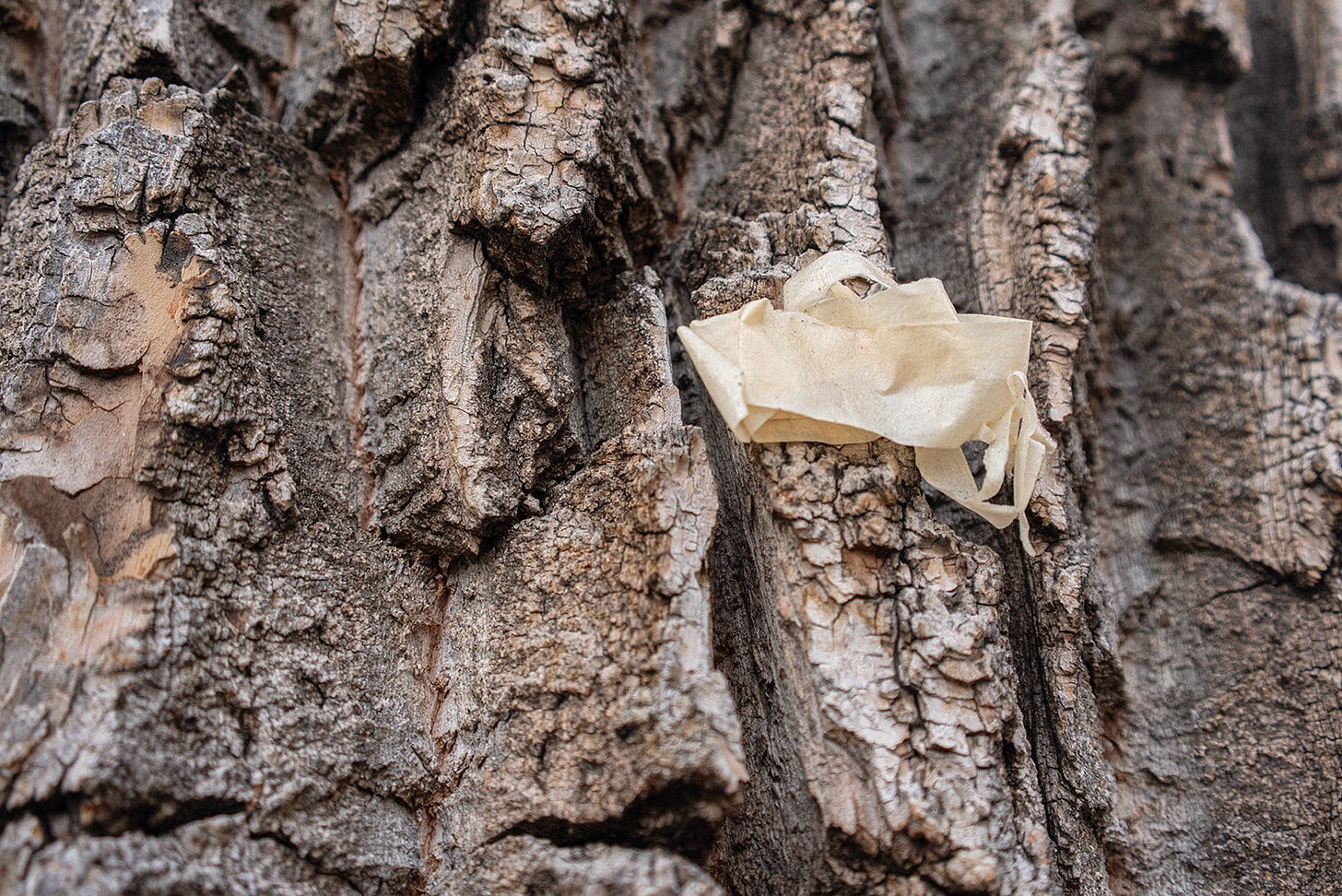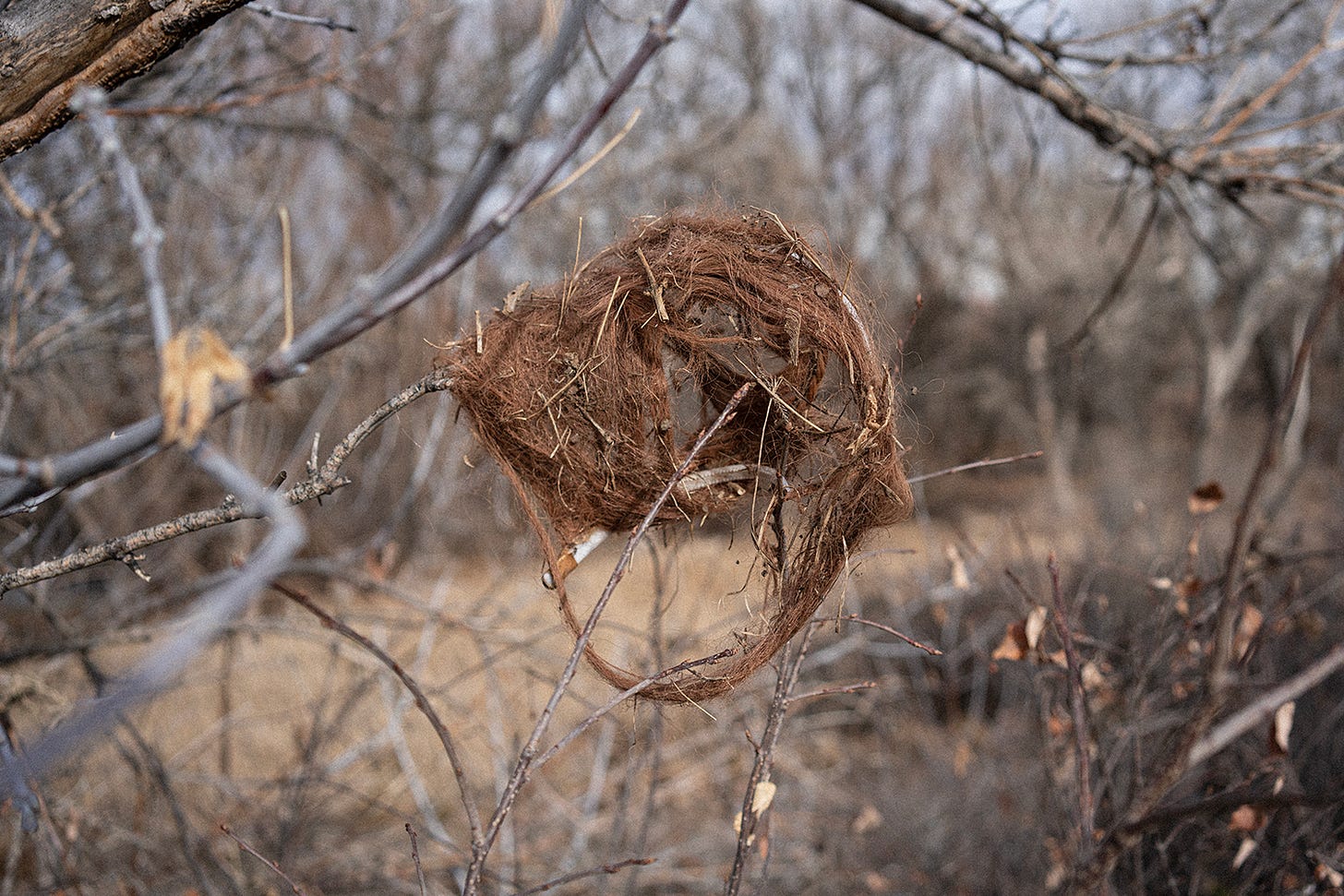Somehow, when I wasn’t looking, and when I wasn’t in Art School™ “twigs” became shorthand for a lazy topic of masters-level photographic effort. I have not interrogated the exact implications for those still in that system, but I have guesses, both for the offenders and accusers.
The Offenders:
There is a density and a potential oscillation of uncontrolled and human-manipulated compiling of context. Considerations of what influences caused space to be. All of the tropes of “place” (most of which I with engage with until I die) slathered across otherwise neglected landscapes. Plus, all of the formal shit that these places offer up in abundance. Plus, everyone loves (or wants to react to) The Pond. Again, I am guilty.The Accusers:
It’s twigs.
Everyone is right. Everyone also gets to decide what is relevant to them, but if there is somehow a perceived market for continued twig exploration for exhibition and publication, it might be worth validating that before committing to deep twig and twig adjacent work. I’d say make it digitally, as then the investment is minimal (but let’s be honest—twig work happens on film).
The cliché emerges from reality, but the deeper, bigger, thicc-er reality is that there is always work that happens in a kind of feedback loop. In this way, art/photographic projects can remind us how capitalist-adjacent (or embedded) they are. New idea, validated. New idea, replicated, sometimes better, sometimes not. Derivative gets more attention, somehow. Everyone “in the know” gets sick of the whole thing, absorbs it into the cliché function. People earnestly engage with it, try to make it their own, get clowned on, everyone moves onto the next thing.
I’m not ready, so here are some twigs.
Summary via AI.
I’ve been using the transcription service Otto (not an ad) to record dog-walk based over-thinking/rants, and once finished it processes and suggests a number of keywords that the software assumes is relevant. While it struggles to grasp deeper themes, it does highlight concepts I would typically breeze over later as they go too far in the wrong a different direction. For the conversation I had with myself about this idea, the following was what caught the Singularity’s attention:
Place, unadulterated, photograph, evergreen, markers, location, twigs, accessible, seasonal, impact, stable, attention, colonial, appeal, implication, literal, disappointing, opportunity.
A ramble is a way of thinking/speaking as well as walking. A meander ultimately gets you where you want to go, the lack of directness being precisely the point. In the transcript itself it is clear that the colonialism thought was not unconnected to the larger twig thinking, but what the AI presupposes is…what if it was?
And.
Consider watching this li’l film that the Eames made for Polaroid about the SX-70.
I was in Santa Fe recently, reading Cormac McCarthy’s new book. The algorithm sensed this and served up this interview between Cormac and David Krakauer of the Santa Fe Institute. Talking about being a writer and nerd that made friends with physicists, the subconscious and its function in creativity, McCarthy stuff.
Impossibly, yet unsurprisingly, I just came across this image in Eric Paddock’s “Belonging to The West” — perfect twig effort on the east side of the Platte, at a location I ride by several times a week, and about a mile from the images above:
Of course.












Keep 'em comin'?!